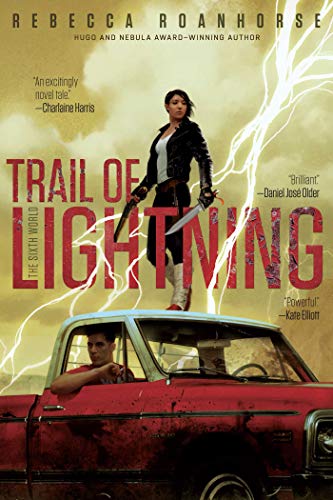We wish you the happiest of holidays!
We thought a good gift for the club would be to read an area of the world that intrigues many—an area which has been brought up a few times in the club because of the number of books recently published by authors from this area.
Any guesses where we’re adventuring to?
What if I noted that while this area is large & comprised of a large number of distinct cultures, its population today is much smaller in comparison to the vast numbers it originally included. According to The World, 93% of this population was killed off—a death toll of 56 million people which is equal to 10% of the world’s population at the time. This event is called the “Great Dying” & is the “largest human mortality event in proportion to the global population, putting it second in absolute terms only to WWII, in which 80 million people died (3% of the world’s population at the time).”
SO WHAT area of the world ARE WE READING?
We’re talking about the indigenous peoples in the North America geographical region. Now to be clear, this area is a huge one comprised of hundreds & hundreds of distinct cultures. However, for the purposes of book suggestions, it makes sense to specify a location large enough that we can compile a good-sized list of indigenous authors. (According to the University of Toronto, indigenous peoples only make up about 2% of the population. Of that, far fewer are of course published authors.)
While it’s titled the North America geographical region of indigenous peoples by anthropologists, it doesn’t follow continent (or country) borders. It encompasses:
Canada
Greenland
The continental US (which includes Alaska, but not Hawaii)
Northern Mexico (i.e., this includes cultures which straddle areas like Texas/Arizona & Northern Mexico such as the Coahuiltecan people, but wouldn’t include cultures a part of Mesoamerica such as the Maya or Aztec).
The North America geographical region is further divided into 10 cultural areas as shown on the map above. Each cultural area shares cultural traits, but includes many different tribes with distinct customs & languages. Each tribe retains tribal sovereignty rights separate from both the country it resides in & its cultural area. (With every tribe having different rules for determining tribal affiliation eligibility, please see the special note below under book suggestions about the qualifications for indigenous authors.)
Speaking of cultural areas, I was able to find a James Beard award-winning cookbook which features traditional & contemporary dishes of the Southwest Indian Nations!
It’s a gloriously photographed book written by a cultural anthropologist who not only studied Native American foods & plants (& is herself part Kiowa), but who is also a featured cooking instructor at the Santa Fe School of Cooking.
“Included are more than 80 recipes rich in natural flavors and perfectly in tune with today’s healthy eating habits. Frank spent 4 years visiting Southwest reservations, documenting time-honored techniques and recipes. With the help of culinary advisor and Navajo Nation tribesman Walter Whitewater, a chef in Santa Fe, Frank has adapted traditional recipes to modern palates and kitchens. With its wealth of information, this book makes it easy to prepare and celebrate authentic Native American cooking.”
HAVE ANY BOOK SUGGESTIONS?
Just let us know your suggestions from North America geographical region indigenous peoples by Fri., Dec. 18 11PM ET. (That’s NYC time. See it converted to your time below.)
An important note re: the qualification of an author as indigenous:
Native identity is a complex & politically fraught subject. As Suzan Harjo notes, “it’s not determined by the individual, but the tribe…with documented Native American ancestry rather than uncorroborated family tales of a Native American ancestor.”
It’s our intention to include books written by indigenous authors about their own cultures rather than someone claiming indigeneity without the recognition of Native nations—or by someone with an indigenous background writing about a tribe to which they do not belong. This is not to say that these other books are not valuable. We’d certainly love to include them in a “related reads” list (i.e., a list which include books written by authors about countries/areas different than their own).
A good example of a related read here is Roanhorse’s book—a book on my TBR which looks great as it made Time’s 100 Best Fantasy Books of All Time as well as winning the Locus award & the World Fantasy Award, & becoming a Hugo/Nebula award finalist.
Why wouldn’t we include this awesome book as an official selection? According to Vulture, Roanhorse was adopted by white parents in Texas. Though her birth mother was one of the Ohkay Owingeh people of New Mexico, Roanhorse is not officially recognized as a tribe member. In addition, her books focus on another people—the Diné (aka Navajo) because Roanhorse has ties there. (She’s married to a member of the Diné & has worked as a lawyer for Legal Aid at the Navajo Nation.) So she’s not formally recognized as indigenous & even if she was, she’s writing about a culture she married into, not her own.
Have a North America geographical region indigenous suggestion? Comment with your suggestion below or in our online book club in Facebook.
We'll use 2 suggestions from book club members, 2 of my suggestions, & 2 suggestions from Mia (the book club co-admin) to compile a list of 6 books on which book club members will provide their thoughts. The book judged as best will then be read.
Please note - We're specific in our indigenous books, they must:
Largely occur in the tribe/tribe’s area unless the world described is an alternate reality
Be written by an author recognized as an official member of the tribe
Exist in paperback & ebook available on both Amazon & Kindle at least in the US & hopefully elsewhere


